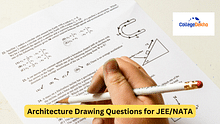The GATE 2024 syllabus for XE consists of 8 sections that candidates must study thoroughly. Get access to the official GATE Engineering Sciences Syllabus 2024 here.

GATE Engineering Sciences (XE) Syllabus 2024: IISc Bangalore is conducting the GATE 2024 exam for 30 papers. One of the key papers is GATE Engineering Sciences for which many students apply. TheGATE exam 2024 for Engineering Sciences will be conducted on February 10, 2024. Candidates who will be appearing for this paper must have detailed knowledge of the GATE 2024 Engineering Sciences Syllabus to plan their studies accordingly and get an idea of what topics are covered. The GATE 2024 syllabus for Engineering Sciences consists of 8 sections namely, Engineering Mathematics, Fluid Mechanics, Materials Science, Solid Mechanics, Thermodynamics, Polymer Sciences and Engineering, Food Technology, and Atmospheric and Ocean Science. Along with that, the GATE 2024 General Aptitude section will also be included for 15 marks in the Engineering Sciences exam that the candidate must study. In addition, to referring to the syllabus candidate must also analyze the GATE 2024 exam pattern to understand the marking scheme, section-wise weightage, exam mode, exam duration, and more.
Passing national-level exams like GATE 2024 is not an overnight task and requires the perseverance of candidates and determination to work hard. In this regard, candidates must be well aware of the GATE preparation tips 2024 and attempt GATE previous year question papers.
Read the full post to check the section-wise GATE Engineering Sciences syllabus 2024, exam pattern, and GATE 2024 General Aptitude syllabus.
GATE Engineering Sciences Syllabus 2024
Knowing the GATE 2024 syllabus for Engineering Sciences Syllabus is essential for exam preparation as it describes all of the topics and subjects that you must study. Go through the GATE 2024 Engineering Sciences Syllabus given below.
GATE XE Syllabus 2024 A: Engineering Mathematics
Section | Topics |
|---|---|
Vector Calculus | Divergence and curl; Gradient, Line integrals and Green's theorem. |
Calculus | Continuity and differentiability; Mean value theorems; Maxima and minima; Taylor's theorem; Fundamental theorem and mean value theorem of integral calculus; Evaluation of definite and improper integrals;Functions of single variable: Limit, indeterminate forms and L'Hospital's rule; Applications of definite integrals to evaluate areas and volumes (rotation of a curve about an axis). Functions of two variables: Limit, continuity and partial derivatives; Directional derivative; Total derivative; Maxima, minima and saddle points; Method of Lagrange multipliers; Double integrals and their applications. Power series; Taylor's series; Fourier Series of functions of period 2π Sequences and series: Convergence of sequences and series; Tests of convergence of series with non-negative terms (ratio, root and integral tests). |
Linear Algebra | Cayley- Hamilton Theorem; Algebra of real matrices: Determinant, inverse and rank of a matrix; Eigenvalues and eigenvectors of matrices; System of linear equations (conditions for unique solution, no solution and infinite number of solutions); Properties of eigenvalues and eigenvectors of symmetric matrices, diagonalization of matrices. |
Ordinary Differential Equations | First order equations (linear and nonlinear); Cauchy-Euler equation; Second order linear differential equations with constant coefficients; Second order linear differential equations with variable coefficients; Wronskian; Eigenvalue problem for second order equations with constant coefficients; Method of variation of parameters; Power series solutions for ordinary points. |
Complex variables | Complex numbers, Argand plane and polar representation of complex numbers; Cauchy-Riemann equations; De Moivre’s theorem; Analytic functions. |
Probability and Statistics | Mean, variance and standard deviation of random variables; Correlation and linear regression; Axioms of probability; Conditional probability; Bayes' Theorem; Binomial, Poisson and Normal distributions |
Partial Differential Equations | One dimensional heat equation and two dimensional Laplace equation; Classification of second order linear partial differential equations; Method of separation of variables. |
Numerical Methods | Solution of systems of linear equations using LU decomposition, Gauss elimination method; Lagrange and Newton's interpolations; Numerical integration by trapezoidal rule and Simpson's rule; Solution of polynomial and transcendental equations by Newton-Raphson method; Numerical solutions of first order differential equations by explicit Euler's method. |
GATE XE Syllabus 2024 B: Fluid Mechanics
Section | Topics |
|---|---|
SECTION 1: Flow and Fluid Properties |
|
SECTION 2: Kinematics of Fluid Motion |
|
SECTION 3: Integral Analysis for a Control Volume |
|
SECTION 4: Differential Analysis |
|
SECTION 5: Dimensional Analysis |
|
SECTION 6: Internal Flows |
|
SECTION 7: Bernoulli’s Equation and its Applications, Potential Flows |
|
SECTION 8: External Flows |
|
Also Read: GATE Biomedical Engineering Syllabus 2024
GATE XE Syllabus 2024 C: Materials Science
1: Classification and Structure of Materials
- Classification and Structure of Materials Classification of materials: metals, ceramics, polymers and composites
- Nature of bonding in materials: metallic, ionic, covalent and mixed bonding; structure of materials: fundamentals of crystallography, symmetry operations, crystal systems, Bravais lattices, unit cells, primitive cells, crystallographic planes and directions; structures of metals, ceramics, polymers, amorphous materials and glasses
- Defects in crystalline materials: 0-D, 1-D and 2-D defects; vacancies, interstitials, solid solutions in metals and ceramics, Frenkel and Schottky defects; dislocations; grain boundaries, twins, stacking faults; surfaces and interfaces
2: Thermodynamics, Kinetics and Phase Transformations
- Extensive and intensive thermodynamic properties, laws of thermodynamics, phase equilibria, phase rule, phase diagrams (unary and binary), basic electrochemistry
- Reaction kinetics, fundamentals of diffusion, Fick’s laws, their solutions and applications
- Solidification of pure metals and alloys, nucleation and growth, diffusional solid-state phase transformations (precipitation and eutectoid), martensitic transformation.
3: Properties and Applications of Materials
- Electronic properties: free electron theory, Fermi energy, density of states, elements of band theory, semiconductors, Hall effect, dielectric behaviour, piezo- and ferro-electric behaviour
- Mechanical properties of metals, ceramics, polymers and composites at room temperature; stress-strain response (elastic, anelastic and plastic deformation)
- Optical properties: Refractive index, absorption and transmission of electromagnetic radiation
- Magnetic properties: Origin of magnetism in materials, para-, dia-, ferro- and ferri-magnetism
- Thermal properties: Specific heat, heat conduction, thermal diffusivity, thermal expansion, and thermoelectricity
- Examples of materials exhibiting the above properties, and their typical/common applications
4: Characterization and Measurements of Properties
- X-ray diffraction; spectroscopic techniques such as UV-Vis, IR and Raman; optical microscopy, electron microscopy, composition analysis in electron microscopes. Tensile test, hardness measurement. Electrical conductivity, carrier mobility and concentrations.
- Thermal analysis techniques: thermogravimetry and calorimetry.
5: Processing of Materials
Heat treatment of ferrous and aluminium alloys; preparation of ceramic powders, sintering; thin film deposition: evaporation and sputtering techniques, and chemical vapour deposition, thin film growth phenomena.
6: Degradation of Materials Corrosion and its prevention; embrittlement of metals; polymer degradation.
GATE XE Syllabus 2024 D: Solid Mechanics
Section 1: Mechanics of rigid bodies Equivalent force systems; free-body diagrams; equilibrium equations; analysis of determinate trusses and frames; friction; principle of minimum potential energy; particle kinematics and dynamics; dynamics of rigid bodies under planar motion; law of conservation of energy; law of conservation of momentum.
Section 2: Mechanics of deformable bodies Stresses and strains; transformation of stresses and strains, principal stresses and strains; Mohr’s circle for plane stress and plane strain; generalized Hooke’s Law; elastic constants; thermal stresses; theories of failure. Axial force, shear force and bending moment diagrams; axial, shear and bending stresses; combined stresses; deflection (for symmetric bending); torsion in circular shafts; thin walled pressure vessels; energy methods (Castigliano’s Theorems); Euler buckling.
Section 3: Vibrations Free vibration of undamped single degree of freedom systems.
GATE XE Syllabus 2024 E: Thermodynamics
Section | Topics |
|---|---|
Section 1: Basic Concepts | Continuum and macroscopic approach; thermodynamic systems (closed and open); thermodynamic properties and equilibrium; state of a system, concepts of heat and work, different modes of work; state postulate for simple compressible substances, state diagrams, paths and processes on state diagrams; zeroth law of thermodynamics; concept of temperature. |
Section 2: First Law of Thermodynamics | Concept of energy and various forms of energy; first law applied to elementary processes, closed systems and control volumes, steady and unsteady flow analysis; internal energy, enthalpy; specific heats; |
Section 3: Second Law of Thermodynamics | Limitations of the first law of thermodynamics, concepts of heat engines and heat pumps/refrigerators, Kelvin-Planck and Clausius statements and their equivalence; reversible and irreversible processes; Carnot cycle and Carnot principles/theorems; thermodynamic temperature scale; Clausius inequality and concept of entropy; microscopic interpretation of entropy, the principle of increase of entropy, T-s diagrams; second law analysis of control volume; availability and irreversibility; third law of thermodynamics |
Section 4: Properties of Pure Substances | Thermodynamic properties of pure substances in solid, liquid and vapor phases; P-v-T behaviour of simple compressible substances, phase rule, thermodynamic property tables and charts, ideal and real gases, ideal gas equation of state and van der Waals equation of state; law of corresponding states, compressibility factor and generalized compressibility chart. |
Section 5: Thermodynamic Relations | T-ds relations, Helmholtz and Gibbs functions, Gibbs relations, Maxwell relations, JouleThomson coefficient, coefficient of volume expansion, adiabatic and isothermal compressibilities, Clapeyron and Clapeyron-Clausius equations |
Section 6: Thermodynamic Cycles | Carnot vapor cycle, ideal Rankine cycle, Rankine reheat cycle, air-standard Otto cycle, airstandard Diesel cycle, air-standard Brayton cycle, vapor-compression refrigeration cycle. |
Section 7: Ideal Gas Mixtures | Dalton’s and Amagat’s laws, properties of ideal gas mixtures, air-water vapor mixtures and simple thermodynamic processes involving them; specific and relative humidities, dew point and wet bulb temperature, adiabatic saturation temperature, psychrometric chart. |
Also Read: GATE Syllabus For Mechanical Engineering 2024
GATE XE Syllabus 2024 F: Polymer Sciences and Engineering
Section | Topics |
|---|---|
Section 1: Chemistry of high polymers | Monomers, functionality, degree of polymerizations, classification of polymers, glass transition, melting transition, criteria for rubberiness, polymerization methods: addition and condensation; their kinetics, metallocene polymers and other newer methods of polymerization, copolymerization, monomer reactivity ratios and its significance, kinetics, different copolymers, random, alternating, azeotropic copolymerization, block and graft copolymers, techniques for polymerization-bulk, solution, suspension, emulsion. Concept of intermolecular order (morphology) – amorphous, crystalline, orientation states. Factor affecting crystallinity. Crystalline transition. Effect of morphology on polymer properties. |
Section 2: Polymer Characterization | Solubility and swelling, concept of average molecular weight, determination of number average, weight average, viscosity average and Z-average molecular weights, polymer crystallinity, Concept of molecular weight distribution and its significance, analysis of polymers using IR, XRD, thermal (DSC, DMTA, TGA), microscopic (optical and electronic) techniques, Molecular wt. distribution: Broad and Narrow, GPC, mooney viscosity. |
Section 3: Synthesis, manufacturing and properties | Commodity and general purpose thermoplastics: PE, PP, PS, PVC, Polyesters, Acrylic, PU polymers. Engineering Plastics: Nylon, PC, PBT, PSU, PPO, ABS, Fluoropolymers Thermosetting polymers: Polyurethane, PF, MF, UF, Epoxy, Unsaturated polyester, Alkyds. Biopolymers such as PLA, PHA/PHB. Natural and synthetic rubbers: Recovery of NR hydrocarbon from latex; SBR, Nitrile, CR, CSM, EPDM, IIR, BR, Silicone, TPE, Speciality plastics: PEK, PEEK, PPS, PSU, PES etc. |
Section 4: Polymer blends and composites | Difference between blends and composites, their significance, choice of polymers for blending, blend miscibility-miscible and immiscible blends, thermodynamics, phase morphology, polymer alloys, polymer eutectics, plastic-plastic, rubber-plastic and rubber-rubber blends, FRP, particulate, long and short fibre reinforced composites. Polymer reinforcement, reinforcing fibres – natural and synthetic, base polymer for reinforcement (unsaturated polyester), ingredients / recipes for reinforced polymer composite. |
Section 5: Polymer Technology | Polymer compounding-need and significance, different compounding ingredients for rubber and plastics (Antioxidants, Light stabilizers, UV stabilizers, Lubricants, Processing aids, Impact modifiers, Flame retardant, antistatic agents. PVC stabilizers and Plasticizers) and their function, use of carbonblack, polymer mixing equipments, cross-linking and vulcanization, vulcanization kinetics. |
Section 6: Polymer rheology | Visco-elasticity-creep and stress relaxations, mechanical models, control of rheological characteristics through compounding, rubber curing in parallel plate viscometer, ODR and MDR. Flow of Newtonian and non-Newtonian fluids, different flow equations, dependence of shear modulus on temperature, molecular/segmental deformations at different zones and transitions. Measurements of rheological parameters by capillary rotating, parallel plate, cone-plate rheometer. |
Section 7: Polymer processing | Compression molding, transfer molding, injection molding, blow molding, reaction injection molding, filament winding, SMC, BMC, DMC, extrusion, pultrusion, calendaring, rotational molding, thermoforming, powder coating, rubber processing in two-roll mill, internal mixer, Twin screw extruder. |
Section 8: Polymer testing | Mechanical-static and dynamic tensile, flexural, compressive, abrasion, endurance, fatigue, hardness, tear, resilience, impact, toughness. Conductivity-thermal and electrical, dielectric constant, dissipation factor, power factor, electric resistance, surface resistivity, volume resistivity, swelling, ageing resistance, environmental stress cracking resistance, limiting oxygen index. Heat deflection temperature –Vicat softening temperature, Brittleness temperature, Glass transition temperature, Co-efficient of thermal expansion, Shrinkage, Flammability, dielectric constant, dissipation factor, power factor, Optical Properties - Refractive Index, Luminous Transmittance and Haze, Melt flow index |
Section 9: Polymer Recycling and Waste management | Life cycle assessment of polymer products (case studies like PET bottles, packaging bags). Polymer waste, and its impact on environment, Sources, Identification and Separation techniques, recycling classification, recycling of thermoplastics, thermosets and rubbers, applications of recycled materials. |
GATE XE Syllabus 2024 G: Food Technology
Section 1: Food Chemistry and Nutrition
Carbohydrates: structure and functional properties of mono-, oligo-, & poly- saccharides including starch, cellulose, pectic substances and dietary fibre, gelatinization and retrogradation of starch. Proteins: classification and structure of proteins in food, biochemical changes in post mortem and tenderization of muscles. Pigments: carotenoids, chlorophylls, anthocyanins, tannins and myoglobin. Lipids: classification and structure of lipids, rancidity, polymerization and polymorphism. Food flavours: terpenes, esters, aldehydes, ketones and quinines. Chemical and biochemical changes: changes occur in foods during different processing. Enzymes: specificity, simple and inhibition kinetics, coenzymes, enzymatic and non- enzymatic browning. Nutrition: balanced diet, essential amino acids and essential fatty acids, protein efficiency ratio, water soluble and fat soluble vitamins, role of minerals in nutrition, co-factors, anti-nutrients, nutraceuticals, nutrient deficiency diseases.
Section 2: Food Microbiology
Characteristics of microorganisms: morphology of bacteria, yeast, mold and actinomycetes, spores and vegetative cells, gram-staining. Food spoilage: spoilage microorganisms in different food products including milk, fish, meat, egg, cereals and their products. Toxins from microbes: pathogens and nonpathogens including Staphylococcus, Salmonella, Shigella, Escherichia, Bacillus, Clostridium, and Aspergillus genera. Microbial growt h: growth and death kinetics, serial dilution technique. Fermented foods and beverages: curd, yoghurt, cheese, pickles, soyasauce, sauerkraut, idli, dosa, vinegar, alcoholic beverages and sausage.
Section 3: Food Products Technology
Processing principles: thermal processing, chilling, freezing, dehydration, addition of preservatives and food additives, irradiation, fermentation, hurdle technology, intermediate moisture foods. Food pack aging and storage: packaging materials, aseptic packaging, controlled and modified atmosphere storage. Oil processing: expelling, solvent extraction, refining and hydrogenation. Cereal processing and products: milling of rice, wheat, and maize, parboiling of paddy, bread, biscuits, extruded products and ready to eat breakfast cereals. Fruits and vegetables p processing: extraction, clarification, concentration and packaging of fruit juice, jam, jelly, marmalade, squash, candies, tomato sauce, ketchup, and puree, potato chips, pickles. Processing of animal products: drying, canning, and freezing of fish and meat; production of egg powder. Plantation crops processing and products: tea, coffee, cocoa, spice, extraction of essential oils and oleoresins from spices. Milk and milk products processing: pasteurization and sterilization, cream, butter, ghee, ice- cream, cheese and milk powder. Waste utilization: pectin from fruit wastes, uses of by-products from rice milling. Food standards and quality maintenance: FPO, PFA, A-Mark, ISI, HACCP, food plant sanitation and cleaning in place (CIP).
Section 4: Food Engineering
Mass and energy balance; Momentum transfer: Flow rate and pressure drop relationships for Newtonian fluids flowing through pipe, Reynolds number. Heat transfer: heat transfer by conduction, convection, radiation, heat exchangers. Mechanical operations: size reduction of solids, high pressure homogenization, filtration, centrifugation, settling, sieving, mixing & agitation of liquid. Mass transfer: molecular diffusion and Flick's law, conduction and convective mass transfer, permeability through single and multilayer films. Thermal operations: thermal sterilization, evaporation of liquid foods, hot air drying of solids, spray and freeze-drying, freezing and crystallization. Mass transfer operations: psychometric, humidification and dehumidification operations
Also Read: GATE Civil Engineering (CE) Syllabus 2024
GATE XE Syllabus 2024 H: Atmospheric and Ocean Science
Section A: Atmospheric Sciences Vertical Structure and Composition of the Atmosphere; Blackbody Radiation and Radiation Balance; Modes of Heat Transfer in the Atmosphere; Greenhouse Effect; Cloud Types; Laws of Thermodynamics; Gas Laws; Hydrostatic Equation; Clausius Clapeyron Equation; Adiabatic Processes, Humidity in the Atmosphere, Atmospheric Stability; Weather and Climate.
Navier-Stokes and Continuity Equations; Compressible and Incompressible Fluids; Pressure Gradient, Centripetal, Centrifugal and Coriolis Forces; Geostrophic, Gradient and Cyclostrophic Balances; Circulations and Vorticity, General Circulation of the Atmosphere. Broad Features of Indian Monsoons, Monsoon Depressions; Tropical Convergence Zones; Tropical Cyclones.
Section B: Ocean Sciences Vertical Profiles of Temperature and Salinity; Stability and Double Diffusion; Equation of State, Equations for Conservation of Mass, Momentum, Heat and Salt; Inertial Currents; Geostrophic Motion; Air-Sea Surface Fluxes; Wind-driven Circulation, Ekman and Sverdrup Transports; Storm Surges, Tides, Tsunamis and Wind Waves; Eddies and Gyres; Eastern and Western Boundary Currents, Equatorial Currents, Indian Ocean Current Systems; Thermohaline Circulation.
Chemical Properties of Seawater, Major and Minor Elements, Ocean Acidification, Biochemical Cycling of Nutrients, Trace Metals and Organic Matter. Biological Pump; Primary and Secondary Biological Productivity; Air-sea Exchange of Biogenic Dissolved Gases; Marine Ecology.
GATE 2024 Syllabus for General Aptitude
The complete GATE 2024 syllabus for the General Aptitude part is provided below.
Sections | Sub-Topic |
|---|---|
Quantitative Aptitude | Data interpretation, 2- and 3-dimensional plots,Maps, Data graphs (bar graphs, pie charts, and other graphs representing data), Mensuration and geometry, Numerical computation and estimation, Elementary statistics, Probability,Tables, Powers, Exponents and logarithms, Permutations and combinations, Series, Ratios, Percentages |
Verbal Aptitude | Basic English grammar, Basic vocabulary, Words, Reading and comprehension, Prepositions, Idiomms, Conjunctions, Verb-noun agreement and other parts of speech, Narrative sequencing, Tenses, Articles, Adjectives, Phrases in context |
Analytical Aptitude | Logic: deduction and induction, Numerical relations and reasoning, Analogy |
Spatial Aptitude | Mirroring Assembling, Grouping, Paper folding, Cutting, Patterns in 2 and 3 dimensions, Rotation, Scaling, Transformation of shapes, Translation |
Also Read: GATE 2024: Preparation Tips For General Aptitude Section
GATE Exam Pattern 2024
Applicants must have through understanding of the GATE 2024 exam pattern know about number of questions, exam mode, duration, marks, etc and solve the paper accordingly. GATE exam pattern has been released by the authorities. Candidates can check the GATE 2024 exam pattern given below.
Particular | Details |
|---|---|
Exam Mode | Online Mode (Computer Based Test) |
Exam Duration | 3 Hours (1 hour of grace time will be given for For PWD candidates ) |
Types of Question Asked | Multiple Choice Questions (MCQ), multiple select questions (MSQ), and numerical answer types |
Sections | 3 (Engineering Mathematics, General Aptitude, and Engineering Sciences) |
Total Marks | 100 Marks |
Total Questions | 65 questions( 10 questions of general Aptitude + 10 questions of engineering mathematics + 45 questions of textile engineering) |
Also Read: GATE 2024 Best Books for Preparation
In addition, you can also look at the following articles that will help you with your GATE 2024 exam preparation.
GATE Mechanical Engineering 2024 Preparation Strategy & Study Plan | |
GATE 2024 Petroleum Engineering Preparation Strategy & Important Topics | |
GATE 2024 Civil Engineering Preparation Strategy & Study Plan | |
We hope that this post on GATE Engineering Sciences Syllabus 2024 was helpful and informative.

















Similar Articles
Documents Required to Fill NATA 2024 Application Form - Photo Upload, Specifications, Scanned Images
Guidelines to Fill NATA 2024 Application Form
Is Physics and Chemistry Still a Part of the NATA Syllabus?
NATA Sample Questions 2024
Architecture (B Arch/B Planning) Drawing Questions for All Exams: JEE Main, JEE Advanced, NATA
List of Colleges Expected for 15,000 Rank in JEE Main 2024